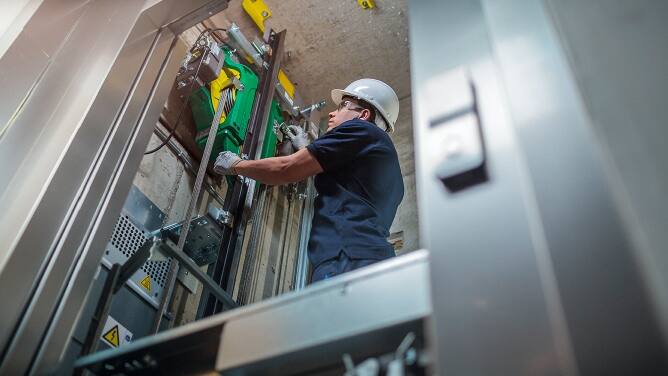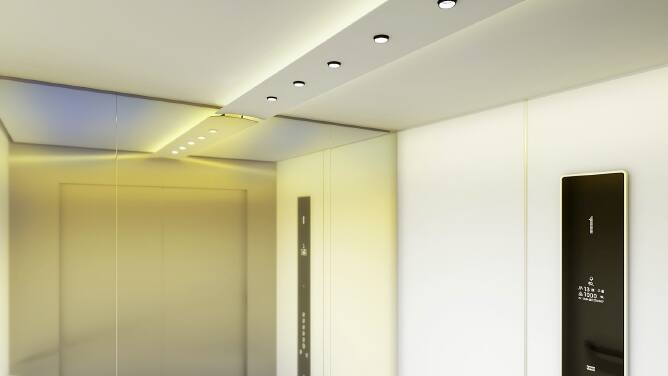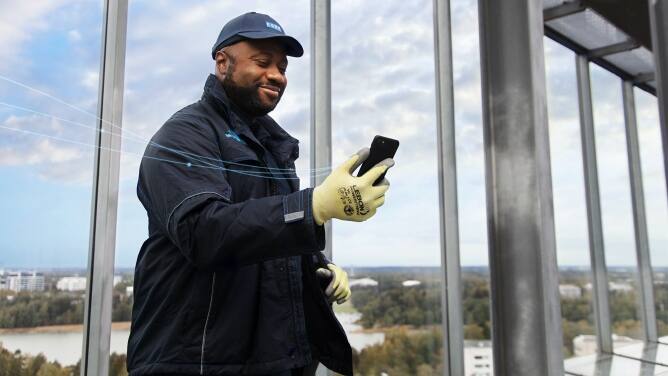
A trusted partner for green building development
We offer solutions and expertise that help you achieve green building credits and certifications that increase building value.
We offer solutions and expertise that help you achieve green building credits and certifications that increase building value.
We are pleased to have received recognition for our environmental and social sustainability performance, including a leader score for Climate in CDP and a Platinum medal in EcoVadis.
We help you achieve your energy-efficiency goals during every phase of the building life-cycle, from design and construction to maintenance and modernization.
We have the widest range of ISO 25745 energy efficiency ratings for A class elevators and A+++ escalators.
Modernizing your elevators can deliver energy savings of up to 70%, while modernizing your escalator up to 50%. Our modernization solutions range from retrofitting LED lights to installing a completely new elevator with energy-regeneration technology.
We're constantly working to improve the energy-efficiency of our products and services. Our current machine room-less elevator is up to 90% more efficient than our elevators from the 90's.
We are committed to maximizing energy efficiency for enviromentally sustainable buildings. We offer sustainable solutions for all buildings ranging from retrofitting LED lights to a completely new elevator with energy-regeneration technology.
Switch to KONE EcoDisc hoisting machines for 50-70% more efficiency than elevators with conventional traction.
Benefit from up to 35% in energy savings by recovering energy from daily elevator use.
Reduce energy consumption by up to 80% with LED and eco-efficient fluorecent lighting.
We maximize escalator and elevator energy efficiency by powering down your equipment when it is not in use.
High-efficiency motors minimize energy consumption at full speed and a special KONE designed TransVario drive can even further reduce energy consumption and oil usage.
Lubrication-free step chain means no oil. This means a cleaner escalator and surrounding environment, reduced fire risk, simpler cleaning and easier maintenance.
We focus on reducing the materials, energy and other resources used in our solutions and operations. Currently, 90% of the metals used in our products can be recycled. And by providing customers with reliable and energy-efficient equipment that has a lifetime of over 25 years, KONE plays an important role in supporting sustainable buildings by keeping valuable resources in use for as long as possible.
Now more than ever, it’s vital we work together to reduce emissions and focus on creating sustainable cities that last for future generations. KONE has set science-based targets for a significant reduction in its greenhouse gas (GHG) emissions and pledged to have carbon-neutral operations by 2030. We aim for a 40% reduction in emissions related to our products' materials and lifetime energy use by 2030 (relative to orders received) and we have committed to a 50% cut in the emissions from our own operations.
We offer planning support for greener buildings, as well as equipment and digital services that open up new ways to save energy. And now, we can offer an option to compensate for the remaining embodied carbon emissions of your elevator until the handover to help you reach your climate targets.
KONE is committed to taking concrete steps towards greener equipment maintenance. That's why we're moving towards a low-emission service car fleet and using predictive maintenance to reduce unplanned maintenance visits. For KONE DX elevators we also compensate the remaining emissions caused by direct and indirect maintenance activities through a verified carbon offsetting program.
While actively reducing our carbon emissions on our way towards our climate targets, we have decided to compensate for some remaining emissions already now. Together with our market leading offsetting partner we have selected to support a diverse range of recognized, Gold Standard certified projects. These projects include forestry, renewables, and energy efficiency and are spread across different continents.

You can use the form below to tell us more about how we can help you. One of our team will be in touch as soon as possible.











